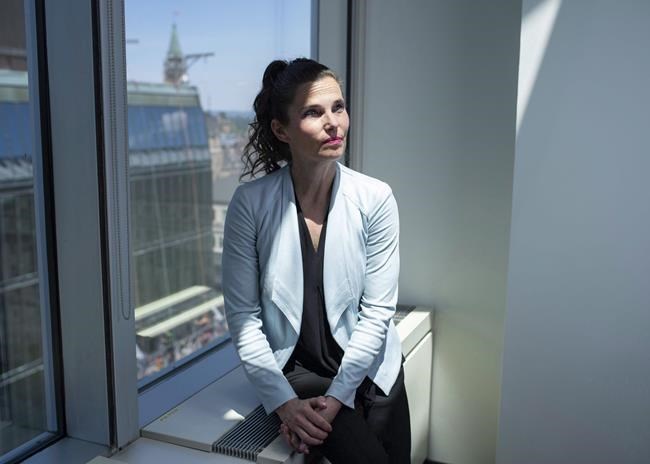TORONTO — Kirsty Duncan was 13 or 14 when she suffered what she believes was surely a concussion.
Now Canada's minister of science, sport and people with disabilities, Duncan was a gymnast, and was executing a double back somersault off the uneven bars. She missed the crash pad and landed flat on her back, knocking the wind out and hitting her head.
"I must've been out because when I came to everyone was around me, vision was blurry, I couldn't hear, I had a sore head, but didn't think too much of it. I never told my parents, I just had a sore head for weeks," Duncan said.
That was back before the sports world learned of the grave danger of concussions.
"I got my wind back I trained the rest of the night, and you don't think anything of it," Duncan said.
Awareness of concussions and chronic traumatic encephalopathy (CTE), which is a brain condition associated with repeated blows to the head, has increased exponentially. High profile stories such as Sidney Crosby's struggles overcoming concussions, and the CTE found in the late players Steve Montador and Derek Boogaard of the NHL, and NFL tight end Aaron Hernandez has helped.
But there's more work to be done.
And with that in mind, a non-partisan subcommittee met Wednesday for the first time in Ottawa, and is tasked with delivering recommendations on how to make sports safer and protecting youth from concussions. Chaired by Liberal MP Peter Fonseca, who ran the Olympic marathon in 1996, it's a subcommittee on the standing committee on health.
"What I hear from athletes, coaches, parents, they want to know: are their children in contact sports learning the right technique at the right age? Do they have the right equipment? They have questions. And I think traditionally we have focused on the diagnosis and the management, and then for athletes, the return to play, return to work, return to school protocols, all of that matters.
"What we really haven't looked at is prevention, although single sports are doing that, they are taking action. . . I hope a strong set of recommendations that I can take to make sport safer for our athletes and for our children."
Last June, Duncan and Parachute Canada, a national organization devoted to injury prevention, announced that 42 of 56 Canadian sport organizations had adopted new concussion guidelines and policies.
Steve Podborski, a former "Crazy Canuck" ski racer and Parachute's president and CEO, called the protocol "the best there is."
"That shows real movement, there's real awareness in the sport community, everyone wants safe sport," Duncan said.
"It matters," she added. "I have always had an interest in the brain, I'm a scientist. When I came to Parliament I wanted to focus on the brain. This is the organ that lets you think, walk, love, write poetry, it controls every other function, and if the brain doesn't work properly nothing else does."
According to a recent Government of Canada study, concussions make up about 93 per cent of the sports and recreation-related traumatic brain injuries among children and youth. They're most common in hockey in males aged five to 14, but rugby among older males.
In females aged 10 to 19, concussions are most commonly reported in ringette.
The subcommittee will hear testimony from people with experience at both the grassroots and high-performance level, plus professional athletes, families who've been affected, national sport organizations, multi-sport organizations, athlete and coaching organization, and researchers and members of the medical community.
The testimony will continue through Dec. 5, then the subcommittee will reconvene when the House of Commons resumes at the end of January. Hearings will continue until April. The group must submit its report to the House of Commons standing committee on health by June 3.
Lori Ewing, The Canadian Press



